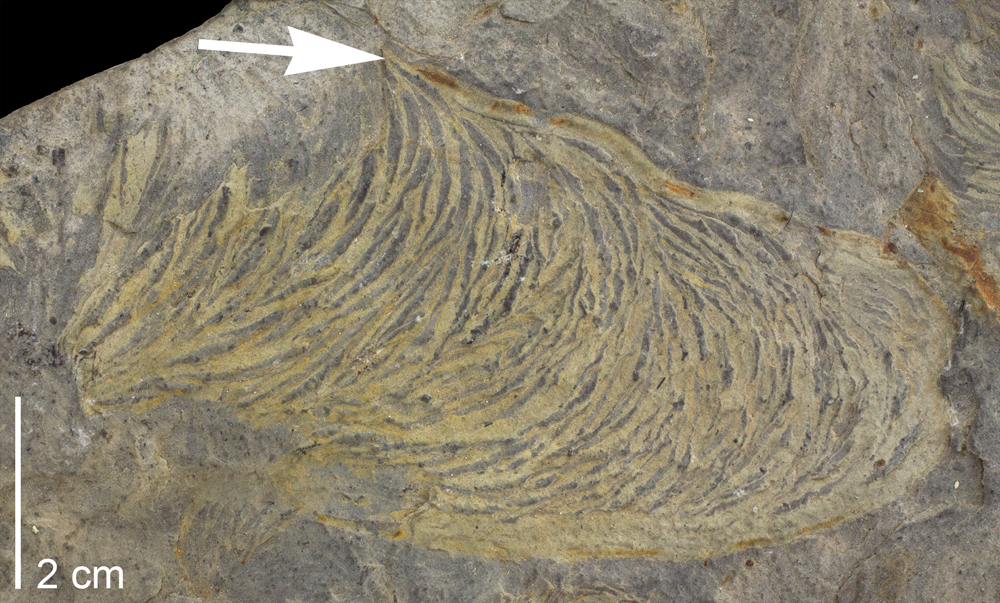Describe Trace Fossils and How Are They Useful
Plants leave traces of their leaves behind to give us ideas into their structure and form. But organisms which once lived and do not exist anymore also have a story to tell about evolution.

1 Body Fossils And Trace Fossils Digital Atlas Of Ancient Life
They can be used for tracing the evolutionary relationship between species.

. They are NOT the color of the original organic material. Fossils We use living species to trace evolutionary relationships. Fossils can be a variety of colors depending on the minerals deposited in them.
Trace fossils and sedimentary structures provide essential clues. Trace fossils contrast with body fossils which are the fossilized remains of parts of organisms bodies usually altered by later chemical activity or mineralization. Have students record their new knowledge in their journals.
Trace Fossils Trace fossils are the traces an animal or plant left behind after leaving an imprint. TYPES OF FOSSILS The FOUR types of fossils are. However unlike previously mentioned fossils trace fossils are not representations of an organisms body.
Explain why it is rare for an organism to be preserved as a fossil. This post provides some information about them and their examples. Paleontology is the branch of biology that studies the forms of life that existed in former geologic periods chiefly by studying fossils.
Fossils are one of the examples. Identify how index fossils are used to described subdivisions of geologic time scale. For example the study of dinosaur footprints has contributed significantly to our understanding of dinosaur behavior.
Trace fossils are any petrified remains of evidence of biological activity. A trace fossil also known as an ichnofossil ˈ ɪ k n oʊ f ɒ s ɪ l. A fossil is a remnant or the moulding of an animal or a plant preserved in a sedimentary rock.
Trace of deep sea animals. The fossils are also formed in soon-to-been sedimentary rock. Fossils show many body parts and characteristics of the animals that they once were.
It is said that the very small fossils have proven to be the most useful for dating purposes. Microscopic dinoflagellates are one such example. Trace fossils are an imprint an animal left behind and this helps scientists because it tells them where they lives in a particular area How are original remains replaced remains molds and casts similar and how are they different.
The Cenozoic Era 66 million years ago through today is the Age of Mammals Birds and mammals rose in prominence after the extinction of giant reptiles. Fossils are very useful to the study of tectonic history. Fossils can help date rock horizons and can help identify similar environments when the same fossil is found in different locations.
Trace Fossils Body Fossils Earth Science for Kids. Trace fossils are useful for paleontologists because they tell about the activity of ancient organisms. Trace fos s ils are indirect evidence of an organisms existence.
Many trace fossils are easily confused with features of inorganic origin. Fossils helped identify how the different land masses movedplate tectonics worked because similar fossils on different continents sometimes showed how the different land masses were once connected eg. Are evidence of life that is not a body fossil such as tracks burrows eggs feces or nests.
ἴχνος ikhnos trace track is a fossil record of biological activity but not the preserved remains of the plant or animal itself. Looking at fossils is much like looking at the creature itself in many ways. Trace Fossils give information.
Trace fossils sometimes also called ichnofossils provide evidence about the movements andor activities of ancient organisms but not necessarily about their appearanceThere are three major types. Fossils are remains of animals or plants which are buried under layers of earth and harden in course of heavy pressure and are petrified retaining the original features to some extent. The factors they use are trace fossil distribution intensity of bioturbation trace fossil diversity presence or absence of burrow linings trace fossil size distribution and.
Common Cenozoic fossils include cat-like carnivores and early horses as well as ice age fossils like wooly mammoths. Original remains are the fossil remnant of an organism like a bone for example that is still intact and unchanged. Trace fossils are the activity traces animals leave as clues about how they lived.
The age of fossils is determined by the amount of residual radio carbon present in. When a fossil of a given species is found on several modern continents it gives a strong indication that. Nests burrows footprints and other evidence of an animals presence on Earth are all examples of fossils.
The mineral form of the animal or plants structure is all thats left. Distinguish the difference between body fossils and trace fossils. On the contrary trace fossils represent an organisms activity.
In other words trace fossils are created when an organism does some activity. They are the preserved traces of living entities. Index fossils are used to identify geologic periods which is why they are also known as guide fossils or indicator fossils.
Africa and South America. Trace fossils indicate where a living organism has been even though the body fossil has not been preserved at that spot. Describe five types of fossilization and what a living fossil is.
Preserving how the organism interacted with its environment. Caves can preserve the remains of ice-age animals that died in them or. Preserved activitybehavior of organisms.
For example the scratches made on trees or the burrows they create.

Examples Of Typical Pre Turbidite Trace Fossils Of Complex Nature Download Scientific Diagram

Comments
Post a Comment